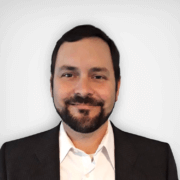The importance of a contact model
(Why you need one and how to create it!)
Audience engagement matters for building affinity that often leads to increased action by our audiences and constituents—more or higher donations, signing action alerts or sharing our messages with friends and colleagues increasing our reach. Pulling all the threads of data together to understand your current state and where to look for improvements can feel daunting, especially in the absence of a contact model as a starting point.
An effective contact model outlines and connects:
- The strategic objectives (organizational goals) for engaging with a particular contact
- The tactical engagement points used to meet those objectives
- The key attributes of a contact that should be tracked within (and across) systems to measure and improve engagement
Most organizations have some elements of a contact model in their systems, but the components are likely distributed and inconsistent. In order for your organization to scale engagement in the most meaningful way, having these contact attributes clearly defined and consistently implemented is critical. Follow along with this conversation about how and why to build your organization’s contact model!
Event recording
Recorded October 6, 2021 | ~55 minutes
Slide deck with use case worksheets
More resources
- Blog post: Why your organization needs a contact model
- Blog post: How to adopt a data-driven business culture
Speaker
 Adam Good
Adam Good
Senior Strategist
Adam Good has been working with organizations on their engagement strategies and platforms since “social widgets” were a thing and MySpace was still the space. He blends his professional experience in communication strategy, organizational change and digital engagement with a lifelong love of board games, music production and experimental poetry and art. The throughline connecting these interests is an abiding fascination with the systems that connect and empower people to have meaningful experiences and change the world. Beyond these interests, Adam is a voracious consumer of ideas and information across sources and boundaries; he folds his findings from all fields into an ever-evolving notion of engagement.
 Adam Good
Adam Good